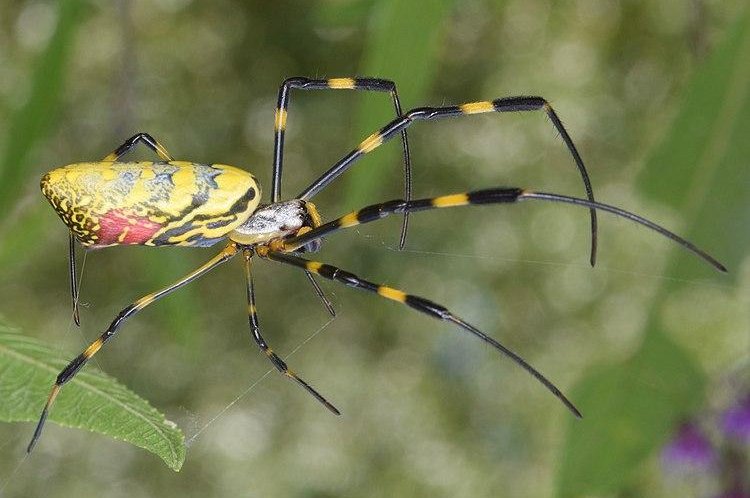BUG ARMAGEDON
Insects could kill 1.4 million trees in U.S. cities by 2050, study says 
Workers using chainsaws and heavy equipment removed nearly 800 ash trees on the Gateway Arch grounds in St. Louis in November 2014 in advance of the arrival of the emerald ash borer beetle. File Photo by Bill Greenblatt/UPI | License Photo
March 14 (UPI) -- Invasive insects could kill 1.4 million trees by 2050 in cities across the United States, which could cost more than $900 million to replace, according to a new study.
The study, published in the British Ecological Society's Journal of Applied Ecology, used data from around 30,000 urban areas across the country to create the forecast and recommend that cities take steps to plant a variety of trees rather than trees from a single species.
The study was conducted by researchers from McGill University and North Carolina State University with the U.S. Forest Service's Southern Research Station.
"These results can hopefully provide a cautionary tale against planting a single species of tree throughout entire cities, as has been done with ash trees in North America," Emma Hudgins, the study's lead author, said in a press release.
"Increasing urban tree diversity provides resilience against pest infestations. While we know this more intuitively for monocultures of crops, many cities continue to plant what are essentially monoculture urban forests."
The emerald ash borer, a green jewel beetle native to northeast Asia, is projected to kill nearly all ash trees in more than 6,000 urban areas. The beetle, which lays eggs and feeds under the bark of the ash trees, is expected to cause 90% of the 1.4 million urban tree deaths projected in the study.
The U.S. Department of Agriculture and state agencies have long struggled to fight the invasive species, which has already killed millions of ash trees across North America. Last year, the Montana Department of Agriculture issued an emergency quarantine order in an attempt to quell their spread into the state.
The new study found that the death of urban trees will be concentrated into "hot spot" cities that include New York, Chicago and Milwaukee, which have high numbers of ash trees and have been introduced to the emerald ash borer or are in its path.
Researchers also examined the potential impacts of other insect species that have not arrived in the United States. The study found that wood-boring insects from Asia, such as the citrus long-horned beetle, could cost the United States as much as $4.9 billion by 2050 if they are introduced in the country.
"This paper shows that unless we plant a variety of tree species in our cities, urban trees are seriously at risk from invasive pests," said Jane Memmott, an ecologist and entomologist at the University of Bristol, who was not a part of the study.
"The take-home message to urban planners is to plant multiple species in cities rather than focus on just a few familiar species. It'll keep trees wonderful, and it will keep them in our cities."
Hudgins noted that the study specifically researched street trees in the United States because of the availability and accuracy of the data used in the modeling, but that the findings also apply to neighboring countries like Canada.
"We can see a similar situation in Canada, since emerald ash borer arrived here by spreading across the border with the United States, and cities like Montréal are in the process of losing all of their ash trees," she said.
"Colder cities like Winnipeg appear to be seeing delayed impacts of emerald ash borer due to its need to complete a longer life cycle at low temperatures."
SPIDERS ARE NOT INSECTS THEY ARE ARACHINDS
THEY ARE STILL BUGS
By Allison Finch, Accuweather.com

The Joro, which can grow to a size that can span a human palm, is one of only a few spiders that will catch and eat brown marmorated stink bugs, which are serious pests to many crops, and help suppress mosquito and biting fly populations.
File Photo by Christina Butler/Wikimedia Commons
March 14 -- After rapidly reproducing in Georgia last year, the Joro spider, native to East Asia, could spread to much of the East Coast in the coming year, according to new research from the University of Georgia, which also suggests the insects' ability to survive certain weather conditions will influence just how far north they move.
The Joro spider is a part of the Trichonephila clavata species and is part of a group of spiders known for highly organized, wheel-shaped webs. The females have colorful yellow, red and blue markings on their bodies and can measure up to 3 to 4 inches when their legs are fully extended. The males have a brown body and are much smaller compared to the females.
The Joro spider was first identified in the U.S. almost 10 years ago in 2014 when Rick Hoebeke, a collections manager at the Georgia Museum of Natural History, received a call about an unusual spider. From that first encounter with the unique spider, Hoebeke led an effort to identify the East Asia native spider and has since tracked the species throughout Georgia.
"Our best guess is that it came in a shipping container and dropped off here somewhere on I-85 [near Atlanta] in the Braselton area," Hoebeke said in a statement. "They are great little hitchhikers."
March 14 -- After rapidly reproducing in Georgia last year, the Joro spider, native to East Asia, could spread to much of the East Coast in the coming year, according to new research from the University of Georgia, which also suggests the insects' ability to survive certain weather conditions will influence just how far north they move.
The Joro spider is a part of the Trichonephila clavata species and is part of a group of spiders known for highly organized, wheel-shaped webs. The females have colorful yellow, red and blue markings on their bodies and can measure up to 3 to 4 inches when their legs are fully extended. The males have a brown body and are much smaller compared to the females.
The Joro spider was first identified in the U.S. almost 10 years ago in 2014 when Rick Hoebeke, a collections manager at the Georgia Museum of Natural History, received a call about an unusual spider. From that first encounter with the unique spider, Hoebeke led an effort to identify the East Asia native spider and has since tracked the species throughout Georgia.
"Our best guess is that it came in a shipping container and dropped off here somewhere on I-85 [near Atlanta] in the Braselton area," Hoebeke said in a statement. "They are great little hitchhikers."
Since 2014, the Joro spider has been found in about 25 different counties across Georgia. The spiders have been spotted suspending themselves in three-dimensional webs on porches, power lines and mailboxes, rattling many residents.
They use a ballooning technique, in which the spider uses its web to catch a current of air, to fly for 50-100 miles before latching onto a tree.
But their ability to launch themselves into the air and fly isn't the only reason they have spread. Humans also factor into the spread of these spiders.
"The potential for these spiders to be spread through people's movements is very high. Anecdotally, right before we published this study, we got a report from a grad student at [the University of Georgia] who had accidentally transported one of these to Oklahoma," undergraduate researcher Benjamin Frick said in a statement.
Residents will have to get comfortable because this new arachnid isn't going anywhere. The spider has been found in nearby states, including Tennessee, South Carolina and North Carolina, and entomologists expect that it will continue to spread throughout the Southeast.
In fact, the new research from the University of Georgia found that this spider has a 77% higher heart rate, double the metabolism and can survive a brief freeze that would typically kill off its relatives. The new data reveals that this spider could potentially survive not just in nearby states but up and down the East Coast and possibly even into Canada.
"It looks like the Joros could probably survive throughout most of the Eastern Seaboard here, which is pretty sobering," study co-author Andy Davis said in a statement.
Joro spiders are native to Japan, which shares a similar climate to the eastern U.S.
Researchers have not noticed any adverse effects from the Joro spider on native species, which is often a significant concern with invasive species.
University of Georgia entomologist Nancy Hinkle said that these "beautiful creatures" offer "free pest control."
"Joro spiders present us with excellent opportunities to suppress pests naturally, without chemicals, so I'm trying to convince people that having zillions of large spiders and their webs around is a good thing," Hinkle said.
The Joro is one of only a few spiders that will catch and eat brown marmorated stink bugs, which are serious pests to many crops. They also will likely help suppress the mosquito and biting fly populations.
For those concerned or perhaps not a fan of the new spider, their lifespan is short, lasting only a year, as they all die off around late November. They leave behind a sac full of eggs that will emerge in the spring.
But experts say Joro spiders are quite harmless to humans and are generally large enough for people to avoid. Almost all spiders are venomous, but the venom from the Joro spider isn't believed to be a threat to humans. In fact, the spiders have such small fangs that a defensive bite from a Joro spider likely wouldn't even break a person's skin.
While running into a spider the size of the palm of your hand could freak you out, it's important to remember that one encounter with a spider could save you dozens of meetings with other insects.
No comments:
Post a Comment